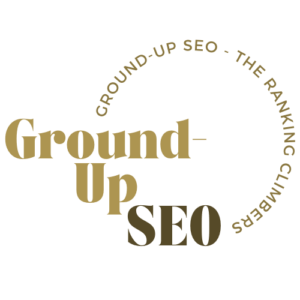SEO and digital marketing are crucial for achieving online success. While SEO, or Search Engine Optimization, focuses on improving your website’s visibility in search results, digital marketing encompasses a range of strategies to promote products and services online. Integrating these two fields allows businesses to attract more visitors, enhance user engagement, and increase conversion rates.
By aligning SEO techniques with your digital marketing efforts, you can create a cohesive strategy that maximizes your online presence. This includes optimizing content for search engines while also ensuring it resonates with your target audience. In this guide, we’ll explore effective methods for integrating SEO into your digital marketing strategy, the role of user experience, and how email marketing can support your overall SEO goals.
How SEO Fits into Digital Marketing

SEO plays a vital role in digital marketing. It improves the chances of your content being seen by potential customers searching for relevant information. When you optimize your website for search engines, you create a solid foundation for all your digital marketing efforts. This means that even if you run social media campaigns or send out email marketing blasts, users can still find your website through organic search.
The integration of SEO into your overall digital marketing strategy ensures that every effort you make has a higher chance of reaching your target audience. This not only drives more traffic to your site but also increases the likelihood of converting visitors into customers. Ultimately, this leads to better return on investment (ROI) and contributes to long-term business success.
Integrating SEO with Social Media Marketing
Social media platforms are powerful tools for reaching a broad audience. When you integrate SEO with your social media strategy, you can drive more traffic to your website. Use relevant keywords in your social media posts and profiles to improve visibility. This makes it easier for users to find your content through searches.
For example, if you are running a campaign, create engaging posts that include your primary SEO keywords. This approach increases the chances of your content being shared and found by potential customers. Consistency across both platforms helps create a strong brand identity and improves your search rankings.
Another effective strategy is to share user-generated content on your social media channels. When customers post about your products, encourage them to tag your business and use relevant hashtags. This not only builds community but also enhances your brand’s visibility across multiple channels. By creating a strong link between your SEO efforts and social media marketing, you can effectively amplify your reach and engage a broader audience.
The Importance of UX in SEO
User experience (UX) plays a significant role in SEO. A well-designed website keeps users engaged, which can lower bounce rates and increase the time spent on your site. Search engines like Google take these factors into account when determining search rankings. A positive UX signals to search engines that your site is valuable to users, which can result in higher rankings.
To improve UX, focus on creating a clean, easy-to-navigate website. Ensure that your pages load quickly and are mobile-friendly. Use clear calls-to-action and relevant content to guide visitors through your site. Incorporate high-quality images and well-structured content to make your pages visually appealing and easy to read. By enhancing the user experience, you not only improve SEO but also encourage users to return to your site.
Moreover, conducting regular UX audits can help identify areas for improvement. Analyze user behavior data to see how visitors interact with your site. Use tools like Google Analytics to track metrics such as page views, average session duration, and bounce rates. This data can provide valuable insights into what is working and what needs to be adjusted to improve the overall experience.
Email Marketing and SEO

Email marketing is a valuable tool for driving traffic and improving your SEO efforts. By sending targeted emails with relevant content, you can encourage recipients to visit your website. Include links to your latest blog posts or product pages, and use keywords that align with your SEO strategy.
Segment your email list to tailor your messages to different audience groups. Personalized emails tend to have higher open and click-through rates, increasing the chances of users engaging with your content. This engagement can lead to more organic traffic, which positively impacts your search engine rankings.
To maximize the effectiveness of your email marketing, consider creating a dedicated email campaign focused on a specific topic or promotion. Use compelling subject lines that include relevant keywords to grab attention. Additionally, consider including a brief snippet of valuable content in the email that encourages readers to click through to your website for the full article or offer.
Search Engine Optimization Techniques and Best Practices
To effectively integrate SEO into your digital marketing strategy, consider the following SEO techniques and best practices:
- Keyword Research for SEO: Identify relevant keywords that your target audience is searching for. Use tools like Google Keyword Planner, Ahref, and SEMRush, to find keywords with high search volume and low competition. Focus on long-tail keywords as they often have lower competition and can attract more targeted traffic.
- On-Page SEO: Optimize individual pages by using keywords in titles, headers, and meta descriptions. Ensure that your content is informative and valuable to users. Properly format your content using headers, bullet points, and images to make it easier to read and more engaging.
- Off-Page SEO: Build backlinks from reputable websites to increase your domain authority. Guest blogging and social media sharing can help achieve this. Collaborate with influencers or industry leaders to expand your reach and create valuable partnerships that benefit your SEO efforts.
- Local SEO Strategies: If you have a local business, optimize your website for local searches. Use local keywords, claim your Google My Business listing, and encourage customer reviews. Ensure that your name, address, and phone number (NAP) are consistent across all online platforms to improve local search visibility.
Conclusion
Integrating SEO and digital marketing is essential for building a strong online presence. By aligning your strategies, you can attract more visitors, improve engagement, and ultimately drive sales. Focus on creating a seamless experience for users, and implement effective SEO techniques to boost your search rankings. Remember, email marketing, social media, and strong UX are key components of a successful strategy.
With the right approach, you can maximize the potential of both SEO and Search Engine Optimization, ensuring your business thrives in a competitive online landscape. Regularly assess your strategies and make adjustments as necessary to stay ahead of trends and shifts in consumer behavior. Consistency and commitment to improvement will lead to long-term success in both fields.
Want to improve your online visibility? Check out my SEO services. If you have any questions, feel free to send me a message!
